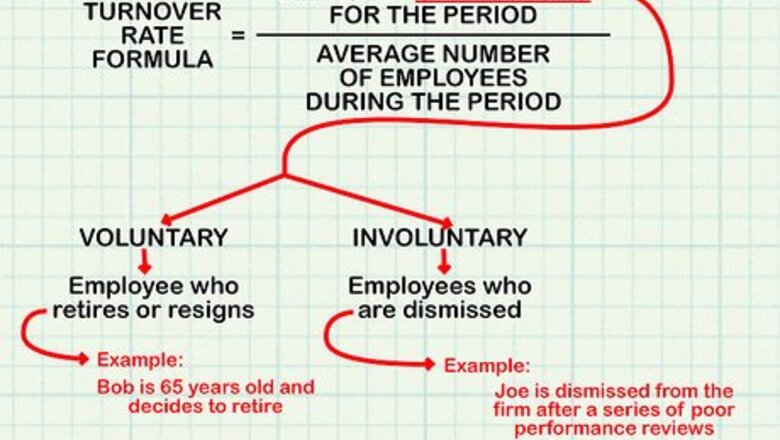
views
Using the Turnover Rate Formula
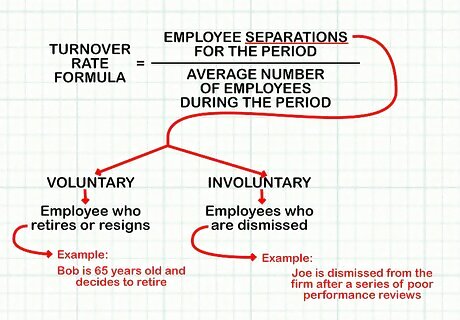
Learn the turnover rate formula. The turnover rate formula is (Employee separations for the period) / (Average number of employees during the period). Some businesses use the word “termination” instead of separation. Both terms refer to a worker leaving the company. Separations can be voluntary or involuntary. A voluntary separation refers to an employee who retires or resigns. In both instances, the worker is making the decision to leave. For example, if Bob is 65 years old and decides to retire, his departure his considered a voluntary separation. When employees are dismissed, that action is considered an involuntary separation. A layoff is also categorized as an involuntary separation event. For example, if Joe is dismissed from the firm after a series of poor performance reviews, his departure is considered an involuntary separation
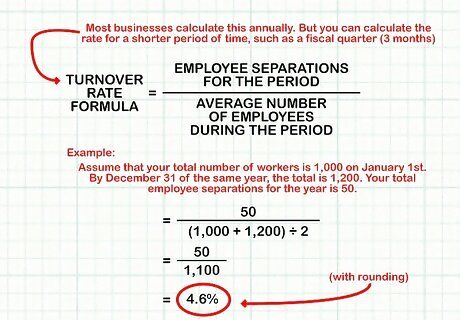
Calculate turnover for your firm. Most businesses calculate the turnover rate at least annually. You can calculate the rate for a shorter period of time, such as a fiscal quarter (3 months). Assume that your total number of workers is 1,000 on January 1st. By December 31 of the same year, the total is 1,200. Your total employee separations for the year is 50. Your average number of employees for the year is (1,000 + 1,200)/ 2 = 1,100 workers. Your turnover rate is (50 separations) / (1,100 average number of workers) = 4.6% (with rounding).
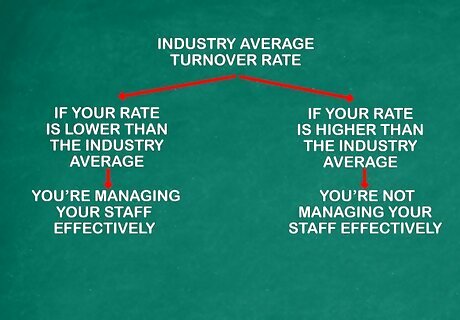
Compare your turnover rate with the rates in your industry. That comparison will help you assess how well you supervise and manage employees. The turnover rate also has a big impact on your costs. Say, for example, that you manage a fast food restaurant. This industry normally sees a 30% annual turnover rate. You determine that your restaurant has a 15% turnover rate for the year. Your rate is much lower than the industry average. The lower rate is an indication that you’re managing your staff effectively. If the restaurant had a 50% turnover rate, you need to find out why. If your rate is higher than the industry average, you may not be managing or selecting workers effectively. Your turnover rate is higher than expected. Something is not working properly and that issue needs to be addressed.
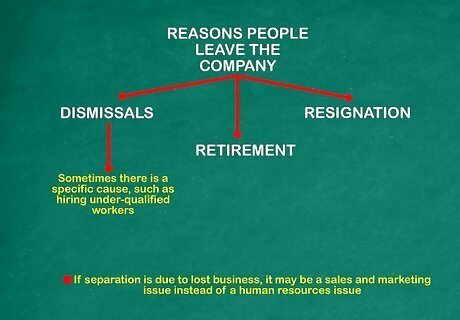
Analyze the reasons why people leave the company. Workers leave your firm for different reasons. If you know why people are leaving your firm, you may be able to take steps to reduce your rate of turnover. Reducing the turnover rate can save you time and money. If the 50 separations in the example are dismissals, they may occur throughout the year. There may not be a specific event that drives dismissals, however there is sometimes a specific cause, such as hiring under-qualified workers. You'll need to analyze the problem before coming to a conclusion. This is also true of resignations. While you can’t control retirements, you can take steps to reduce dismissals and resignations. Analyze how you hire, manage, and counsel your employees. See if you can make changes to reduce turnover. The 50 separations could be due to a single layoff due to lost business. Losing business may be a sales and marketing issue instead of a human resources issue. In this case, the changes you need to make are not related closely to managing people.
Making Decisions About Turnover
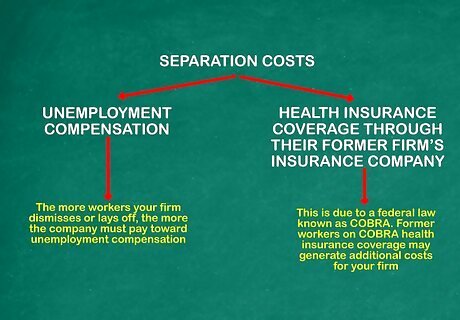
Consider separation costs. When workers leave your business, your firm will incur several types of costs. Some of these costs are due to regulations and laws that are designed to help workers who are dismissed or part of a layoff. Your workers may be eligible for unemployment compensation. Typically, firms pay into a state unemployment fund to cover the cost of paying unemployment compensation. The more workers your firm dismisses or lays off, the more the company must pay toward unemployment compensation. Dismissed employees and workers involved in layoff are also eligible for continuing health insurance coverage through their former firm’s insurance company. This is due to a federal law known as COBRA. Former workers on COBRA health insurance coverage may generate additional costs for your firm.
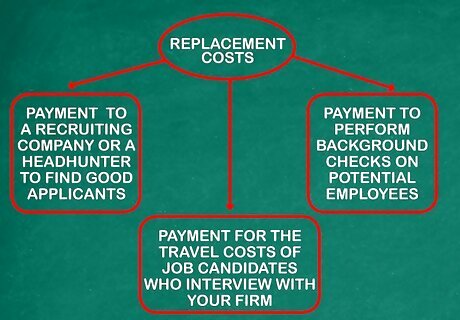
Add up your replacement costs. If you dismiss a worker, or lose staff due to retirement or resignation, you may incur costs to replace that employee. In addition to the costs, you and your staff will have to spend time interviewing and assessing new candidates. To find good candidates for your open position, you may have to pay a recruiting company or a headhunter to find applicants. Your company may need to pay the travel costs for job candidates who interview with your firm. Nearly all firms now perform a background check on potential employees. Your firm will need to pay someone to perform these checks.
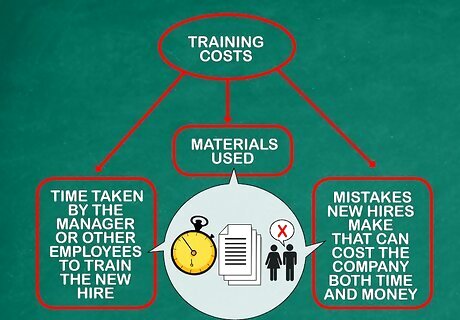
Think about training costs. The cost of finding a new employee usually pales in comparison to the cost of training that employee to become productive within the company. Training costs include both any materials used and the time taken by the manager or other employees to train the new hire. On average, companies spend 32 hours and $1,200 per year on training each employee. You can avoid the additional costs incurred by training new hires by retaining old employees. Also consider the mistakes made by new hires. Any new employee must adjust to the workplace's system and accidents are inevitable. These accidents could end up costing the company both time and money.
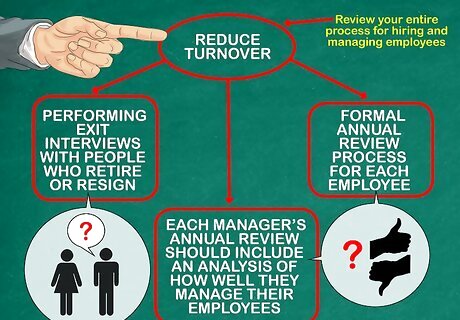
Take steps to reduce turnover. To reduce your turnover, you need to review your entire process for hiring and managing employees. This includes performing exit interviews with people who retire or resign. Ask them why they are leaving your firm. Create a formal annual review process for each employee. Make sure that workers receive timely and relevant feedback on their performance. Each manager’s annual review should include an analysis of how well they manage their employees. This is a critical role for a manager, and they should be assessed on how well they perform. If you take action and improve how to manage employees, you can increase staff morale. If your workforce is satisfied with how they are managed, they may be more productive.



















Comments
0 comment